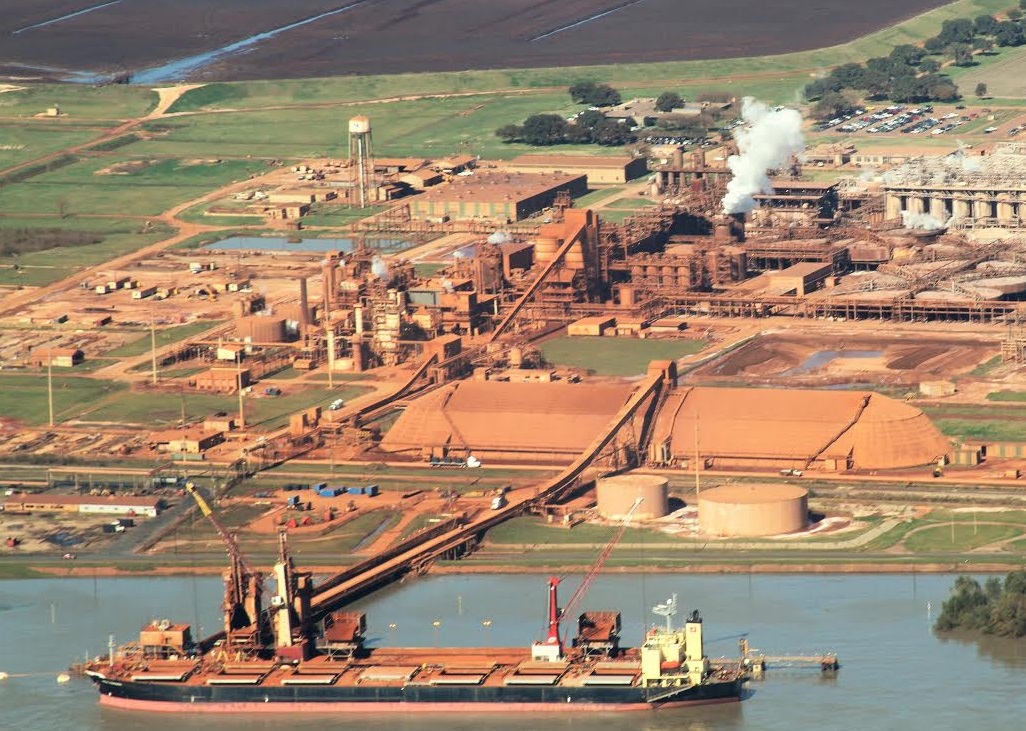
Photo credit Jonathan Henderson
Louisiana Environmental Action Network, Sierra Club Delta Chapter, Gulf Restoration Network, Louisiana Audubon Council and others on June 8, 2017 filed strong objection to the proposed issuance of a Mercury Air Emissions Permit for the Noranda alumina plant in St. James Parish near Gramercy. The Plant produces alumina from bauxite, an ore that contains mercury. The plant has been emitting mercury to the air, probably since production started in 1959 when it was owned by Kaiser, but has never been required by Louisiana Department of Environmental Quality to obtain a permit.
The plant’s new owners, Noranda Bauxite and Alumina are making application for a permit to emit up to 1,500 pounds of mercury per year into the air. An Environmental Integrity Protect report, based on data from EPA’s Toxic Release Inventory, shows that the Plant was the third highest mercury emitter in the nation in 2014 at actual production levels. Under the proposed permit the plant would be the largest emitter in the state and would discharge up to six times more than the second largest mercury air emitter in Louisiana between 2012 and 2015 according to USEPA Toxics Release Inventory.
LDEQ proposes to issue a permit to allow the Noranda alumina plant to continue to emit high levels of mercury without any emission controls or mitigative measures. LDEQ is proposing to allow uncontrolled emissions of mercury to continue to impact the surrounding environment and contaminate fish that people eat simply because its regulations do not require it to impose emission controls.
Long-term monitoring of water and sediments indicate that the plant is a longstanding source of mercury to the wetlands adjacent to the plant that drain into the Blind River. According to Barry Kohl, consulting scientist for Louisiana Audubon Council and Sierra Club, air emissions from the plant drift downwind and are deposited in wetlands and water bodies and accumulate in bottom sediments where elemental mercury converts to methyl-mercury by biologic processes. The methyl-mercury becomes bioavailable to invertebrates and fish and it bioaccumulates in predatory fish.
Mercury is an extremely potent human toxin that affects brain functioning and causes birth defects. When people consume mercury-contaminated fish they risk exposure to harmful levels of methylmercury. Pregnant women, fetuses, and infants are particularly susceptible to harm. EPA has found that serious developmental and adult effects in humans, primarily damage to the nervous system, have been associated with exposures to mercury.
Although Louisiana’s mercury reduction program has been in place since 2008, LDEQ is just now proposing to issue a permit for emissions of mercury to the air from the plant for the first time. We find it totally unacceptable for such a huge discharge of mercury to the air to be considered. The company should at the very least be required to employ the best available technology for control of mercury air emissions from its manufacturing plant and from transportation and stockpiling of materials. The red dust all over the plant site contains mercury and is physical evidence that emissions are out of control.
The deadline for public comments was June 8. We anticipate that there is enough interest in the permit that LDEQ will schedule a public hearing sometime in the next 60 days after close of the public comment period. Sierra Club Delta Chapter will send an alert when we see that a public hearing is scheduled.
Haywood “Woody” Martin, Chair, Sierra Club Delta Chapter